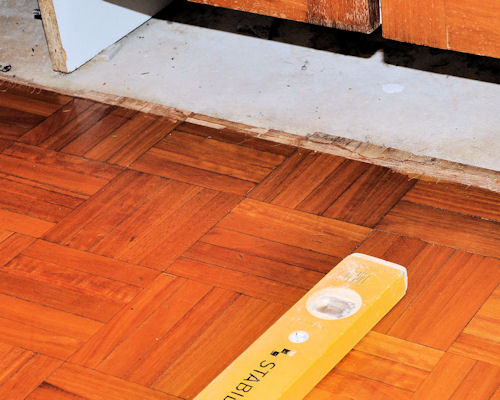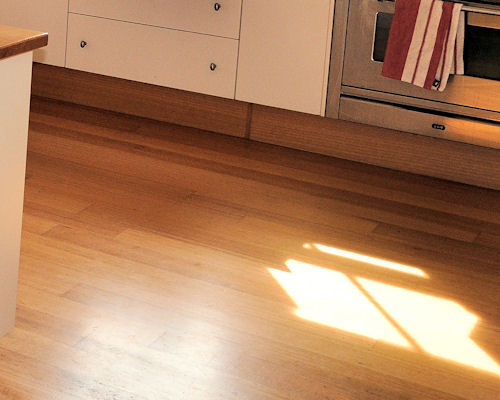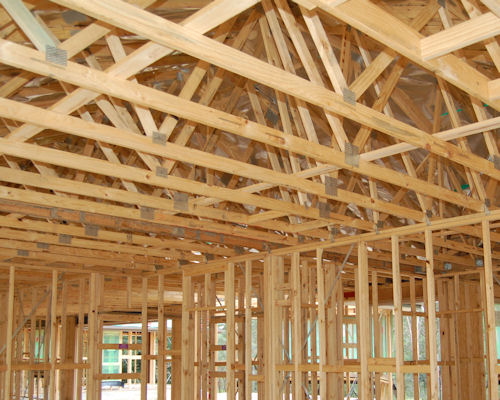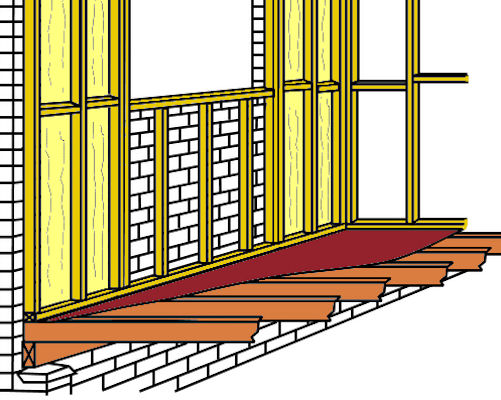Floor systems
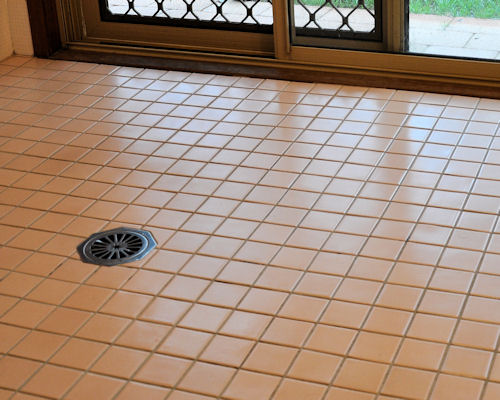 Audio for slide 4 (mp3 |6|KB)
Audio for slide 4 (mp3 |6|KB)
Most floors are finished with ceramic tiles, which are installed on a bed of mortar.
This allows the tiler to put a 'fall' or slope in the floor towards the waste pipes.
Other coverings sometimes used include slate, glass, and even timber when special installation methods are used.

 Audio for slide 5 (mp3 |6|KB)
Audio for slide 5 (mp3 |6|KB)
Timber or steel framed floor
Most raised floors in domestic buildings use plywood or particleboard sheets supported by a frame of timber or steel joists.
This method is called platform flooring, because it allows the builders to work on a platform while they stand up the wall frames and fix them in position.

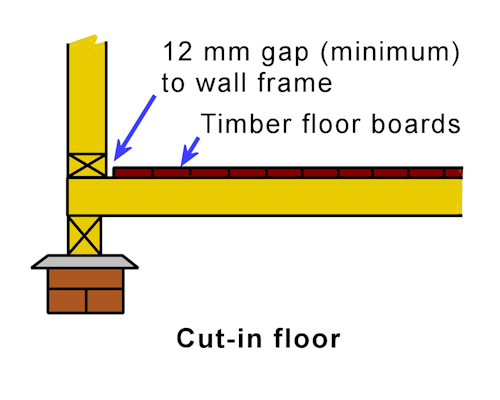 Audio for slide 6 (mp3 |6|KB)
Audio for slide 6 (mp3 |6|KB)
This is the traditional technique used in cottage construction when floors were generally made of tongue and groove timber boards.
The walls sit directly on the floor joists and are erected before the floor boards are installed.

 Audio for slide 10 (mp3 |6|KB)
Audio for slide 10 (mp3 |6|KB)
However, because these are wet areas, the sheet flooring and walls need to be waterproofed first to stop any moisture from seeping through.
Some builders prefer to use compressed fibre cement sheeting under tiles instead of particleboard, because of its extra resistance to moisture.


Learning activity
Audio 11 (mp3 |6|KB)The best way to improve your understanding of the different floor systems is to find buildings that use these systems and look closely at the construction methods. You might be able to do this if you're involved in on-site measure-ups. Or there may be a new estate under development nearby that you can visit. If your own home has a raised floor, you can go underneath and have a look.
Try to get access to the subfloor area, particularly under the kitchen and bathroom, to look at the following floor systems:
- Raised concrete slab
- Raised timber framed floor.
Take photos from the underside of the floor if you can. Share the photos with your trainer and other learners in your group

 Go to External walls
Go to External walls
